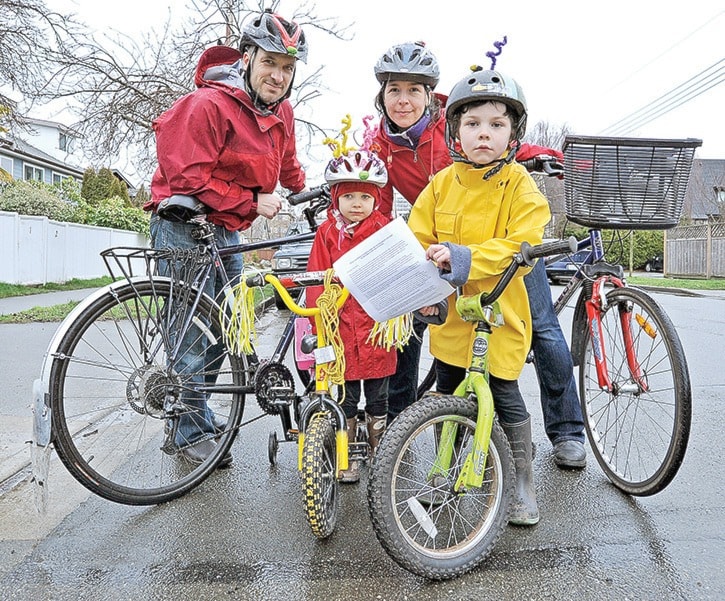Tom Berkhout wants Victoria to live up to its title as the cycling capital of Canada.
Berkhout and a group of bike-friendly residents are launching an online petition to urge the city to set more ambitious targets for cycling during its bicycle master plan update this spring.
"We've certainly fallen behind a lot of Canadian cities in terms of cycling investment," said Berkhout, a Victoria resident who cycles with his wife and two young children regularly.
Berkhout and his colleagues launched a website at bikevictoria.ca last week with the hope of lobbying Victoria for a comprehensive, funded cycling infrastructure plan instead of a piecemeal project list.
"You look around the city now and cycling lanes seem pretty choppy," he said. "We want a 2014 standard, not a 1995 standard."
About six per cent of Greater Victoria residents reported cycling to and from work in 2011, according to Statistics Canada. Ottawa came second at 2.4 per cent, while only 1.8 per cent of Metro Vancouver commuters cycle to work. Municipal data isn't readily available.
Victoria has 25 kilometres of cycling lanes and 2.6 km of trails, including the Galloping Goose Trail, available to cyclists. It also plans to create a 2.5-km, separated bike lane along Dallas Road once work begins on a sewage pipeline connecting Clover Point to the McLoughlin Point wastewater treatment plant in 2016.
But the projects are being created without good ridership data, said Edward Pullman, president Greater Victoria Cycling Coalition.
"We've got cycling counts from the (Capital Regional District and StatsCan), but we need a better idea of metrics and how many people are using the road," Pullman said. "Then we need to start setting short-term targets for those measured increases on the road."
The coalition also wants the city to allot a higher percentage of its transportation infrastructure budget to bike lanes, signage and identifying better bike routes. The city is spending about $150,000 on cycling and pedestrian infrastructure improvements in 2014.
"We definitely don't put five to seven per cent of the transportation budget towards cycling infrastructure right now," Pullman said.
Berkhout also sent an open letter to Victoria council and the city earlier this month to kickstart public input. He hopes the letter will inspire others to participate in the process.
"If Victoria is truly the cycling capital of Canada, let's prove it," he said.
